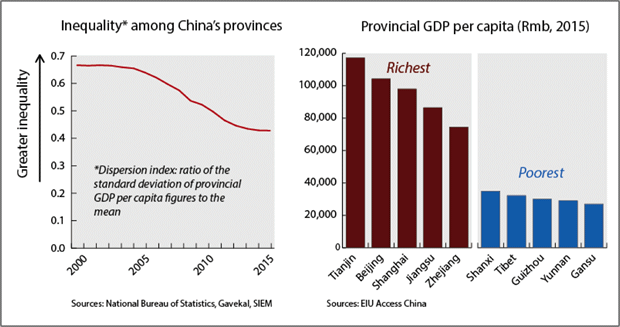You are here
Home ›Has China's drive to develop its western provinces hit a pothole?
by Matt Durnin
19/10/2016
Higher Education Institutions, Further Education Institutions, ELT Providers

China's poorer provinces will continue to receive strong government support and, even as they struggle to catch up to their eastern peers, they are still growing faster than the economies of most developed nations.
As China’s overall economic growth has slowed in recent years, many analysts have pondered whether a second boom might spring forth in the country’s less developed central and western regions, with government intervention and economic momentum helping to close the tremendous wealth gap between China’s wealthy and poor provinces. Policies such as “Go West”, which commits the government to inland infrastructure spending, and the “Belt and Road” initiative, which includes goals of integrating western China with Central Asian economies, seem to support this trend, as does the rapid pace of urbanization in inland third- and fourth-tier cities. For international education institutions, this could mean a new wave of potential students to drive further growth in recruitment.
A look at the provincial economic data, however, suggests that we should temper our expectations of inland China’s economic potential.
While the disparity between wealthy and poor provinces has shrunk over the past 15 years, progress has sputtered more recently, even as the government has intensified its efforts to address the gap. Likewise, GDP figures from last year show very mixed performances among China’s central and western provinces – half underperformed the overall provincial average.

This should not be read as all gloom and doom, however. China’s poorer provinces will continue to receive strong government support and, even as they struggle to catch up to their eastern peers, they are still growing faster than the economies of most developed nations. Moreover, growth could pick up in some of the mining provinces if global commodity prices recover.
The key takeaway from this information should instead be that the emerging opportunities in inland China will be different and slower to develop than what we experienced in the eastern regions over the past decade. Successful engagement will require careful strategy, as well as innovation to cope with challenges, such as lower price tolerance and weaker levels of academic and English performance.
At last year’s SIEM conference we looked at novel methods for benchmarking education opportunities at the provincial and city level in China. At this year’s conference, we’ll explore how perceptions of the UK vary geographically and among age groups. We welcome you to join us for “Exploring the UK’s Cultural and Reputational Strengths in China: Launch of the 2017 Education Futures Report” at the conference on December 8-9.
Latest Blog Posts
04/03/2024




Add new comment
Please note that comments by non-members are moderated. They do not appear on the site until they have been approved. Comments by registered members appear here immediately. Your email address will not be published. All fields are required.